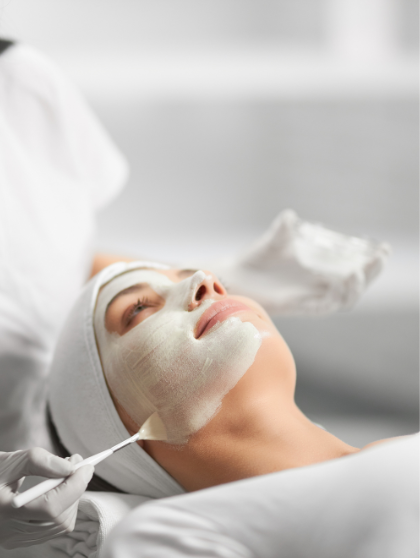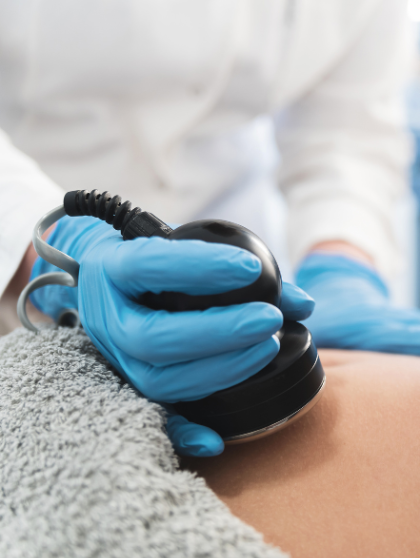
In this article, we'll take a look at Hyaluronic acid, the main ingredient in dermal fillers and mesotherapy. We'll talk about how safe the process is, the results, and whether it's minimally invasive.
Why Use Hyaluronic Acid in Dermal Fillers and Mesotherapy?
Hyaluronic acid fillers are used to restore volume and hydration to the skin. They can also stimulate the production of new collagen to rebuild the face and lips. Hyaluronic acid fillers are non-toxic and are easily dissolved by hyaluronidase, a chemical that breaks down the substance and releases it into the body. Patients can see their results immediately or up to 48 hours after treatment.
Hyaluronic acid is found in the human body in high concentrations in the joint fluids and cartilage. Hyaluronic acid is also used in the treatment of inflammatory diseases, including arthritis. Hyaluronic acid gel works as a cushion between tissues and facial structures, and it binds water molecules to plump the skin.
Hyaluronic acid is produced naturally by the body, but its production slows down as the body ages. This process can also be slowed down by repeated sun exposure or even skin cancer. Dermal fillers containing hyaluronic acid are used to restore volume and reduce wrinkles. Juvederm and Restylane use generous amounts of this substance. Hyaluronic acid fillers can last for eight to twelve months.
Hyaluronic acid is essential for healthy skin. It is naturally present in the human body and acts as a network that carries nutrients from the bloodstream to skin cells. Hyaluronic acid fillers, like Restylane, work by injecting hyaluronic acid into the folds and wrinkles.
Hyaluronic acid-based dermal fillers are becoming more popular as non-invasive cosmetic procedures. There are many different formulations available in the market today, including HA hydrogels, high-molecular-weight hyaluronan complexes, and collagen gels.

Is Hyaluronic Acid Safe in Cosmetic Procedures?
Hyaluronic Acid is a polysaccharide found in the body that makes up approximately 50% of the extracellular matrix. It provides hydration, turgor, and rigidity, and allows for cellular movement. In addition, hyaluronic acid protects the skin from the damaging effects of UVA and UVB rays. Because of its high bioavailability, it is a safe dermal filler for most patients. Hyaluronic acid is a naturally occurring polysaccharide composed of repeating disaccharide units. It is naturally found in soft connective tissues and plays a key role in several processes.
Although it can break down, it can be modified with various crosslinking substances to increase its stability. While hyaluronic acid is degraded by hyaluronidase, it can be safely used in volumizing procedures and is safe when performed according to the proper technique.
Hyaluronic acid is safe to reuse after injection, provided that it is stored properly. Reusable jars should be hermetically closed, and the expiration date should be monitored. Hyaluronic acid safety in dermal fillers and mesotherapy is a top priority, and Reliable Medicare Ltd. is a reliable source of buying dermal fillers with HA.
Hyaluronic acid is a biocompatible substance that has very few adverse side effects. In fact, it is so safe that it is commonly used in injections to treat aching joints. In addition, it is radio transparent, meaning that it won't interfere with x-rays.
Hyaluronic acid safety in dermal fillers is well documented. As long as the patient and practitioner follow the manufacturer's instructions, the results are safe. In addition to skin-shaping effects, the treatments can improve the health of hair and scalp. However, these results take time to manifest and require multiple sessions.
What are the Results Provided by Hyaluronic Acid Treatments?
Hyaluronic acid fillers are very effective and have little downtime. Injectable hyaluronic acid dermal fillers can last for up to 24 months. However, the effect of the treatment will depend on several factors. These factors include the location and the type of hyaluronic acid filler used. Injections may be necessary more than once to maintain the desired effect.
Patients undergoing hyaluronic acid dermal fillers and mesotherapy should take care of their recovery. Post-treatment, patients should avoid heavy exercise for at least 24 hours, and sun exposure for a few days. Patients should take pain relievers to minimize discomfort.
Hyaluronic acid-based mesotherapy is widely used for facial rejuvenation. In addition to its potential to improve skin elasticity, HA-based mesotherapy can be used to improve skin radiance. In the literature, there have been some significant studies evaluating the effectiveness of different types of hyaluronic acid and its effect on the appearance of facial wrinkles. In one reliable study, 55 women suffering from signs of aging received intradermal injections of HA-based filler.
Hyaluronic acid-based mesotherapy increased skin elasticity significantly. In addition, HA-based mesotherapy caused a sustained increase in dermis thickness. This increase was noted between 1 and 3 months after treatment.

Hyaluronic Acid Based Procedures are Minimally Invasive
Hyaluronic acid based injectable fillers are at the forefront of non-invasive dermatological procedures. Linear HA gels contain amino acids, nucleosides, and vitamins. HA hydrogels are synthesized through physical crosslinking.
Mesotherapy is a minimally invasive treatment that delivers a nutritional cocktail to the middle layer of skin. These ingredients stimulate collagen and elastin production. These ingredients are essential for youthful skin, but are depleted during the aging process.
Hyaluronic acid in dermal fillers and Mesotherapy is an excellent choice for people who want a non-invasive, nonsurgical solution to facial wrinkles and folds. Although these treatments do require some downtime, there is minimal risk of adverse reactions and risks. Dermal fillers are less invasive than facelift procedures, and patients can expect to see results right away.
Hyaluronic acid-based dermal fillers can correct fine lines and wrinkles, restore lost volume, and restore a youthful appearance. They can also be used to increase the volume of lips, improve skin tone, and treat certain skin conditions, including basal cell carcinoma.
1. What exactly is hyaluronic acid?
Hyaluronic acid, often known as HA, is a sugar molecule that normally occur in our bodies. It can store 1,000 times its own weight, which serves to maintain our skin moisturised and supple. HA bonds to elastin and water molecules, trapping the acid in our epidermis and preventing it from escaping into the atmosphere.
2. Which skin issues does hyaluronic acid work best for?
As we age, our bodies produce less hyaluronic acid gradually, and we need it from external sources to maintain youthful and healthy skin. A boost of hyaluronic acid is ideal for not only dry, sensitive skin, but also mature skin.
By attracting and trapping moisture to the top layers of your skin, hyaluronic acid efficiently replenishes your skin. It rapidly hydrates your skin for a velvety, delicate, and beautiful look.
3. Can Hyaluronic Acid help with Aging or Dark Spots?
Hyaluronic acid encourages cell regeneration, thus over time, spots, sun damage, fine lines and wrinkles, or any other type of discoloration in the epidermis will diminish. Be persistent with the outcomes as most beauty products require a minimum of eight to twelve weeks to generate significant improvements in your skin. With each use your skin will immediately feel more nourished and flexible.
4. Is Hyaluronic Acid Useful for Skin That Is Exposed to Acne?
Yes, hyaluronic acid is beneficial for all skintones, even greasy and clogged pores skin, as it's a delicate, moisturising component that won't damage cells and lead to more outbreaks.
Anyone who suffers from acne will find it helpful because it also has some anti-inflammatory effects and is non comedogenic, which means it won't block the openings.
5. Can HA function as a barrier against infections?
Hyaluronic acid functions as a defence against infections. By adding additional hydration, hyaluronic acid strengthens your skin's shield against infection and harm done by dryness. Additionally, it tightens and lifts the skin, clearing out appearance of wrinkles. Moreover, it possesses antimicrobial qualities that help reduce the chance of infection in exposed skin infections.
Final Thoughts
Hyaluronic acid is an effective filler for face wrinkles and lines. It is a natural substance that nourishes the skin and makes it more elastic. Injectable hyaluronic acid has the potential to be safe and effective. It can be used to treat lines and wrinkles caused by muscle movement, such as the horizontal lines across the forehead that develop as a result of frowning and squinting.
Hyaluronic is widely used in cosmetic surgery. It can improve facial contours by providing volume to areas such as the cheeks or chin. There are various types of hyaluronic acid, which can be used in different applications.






